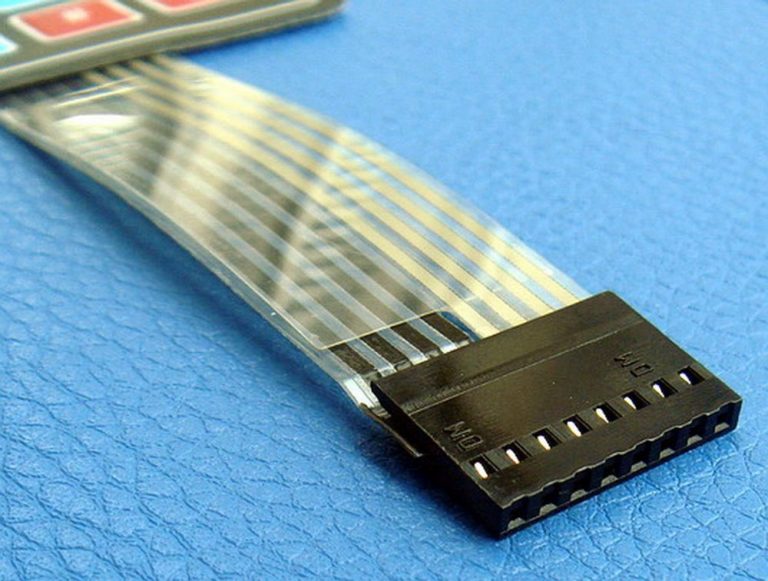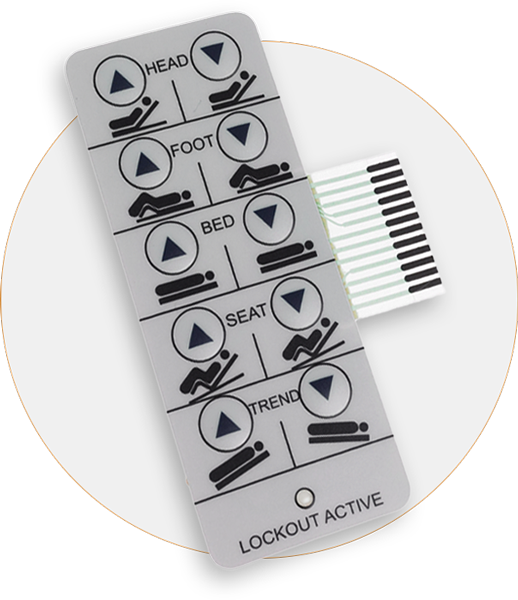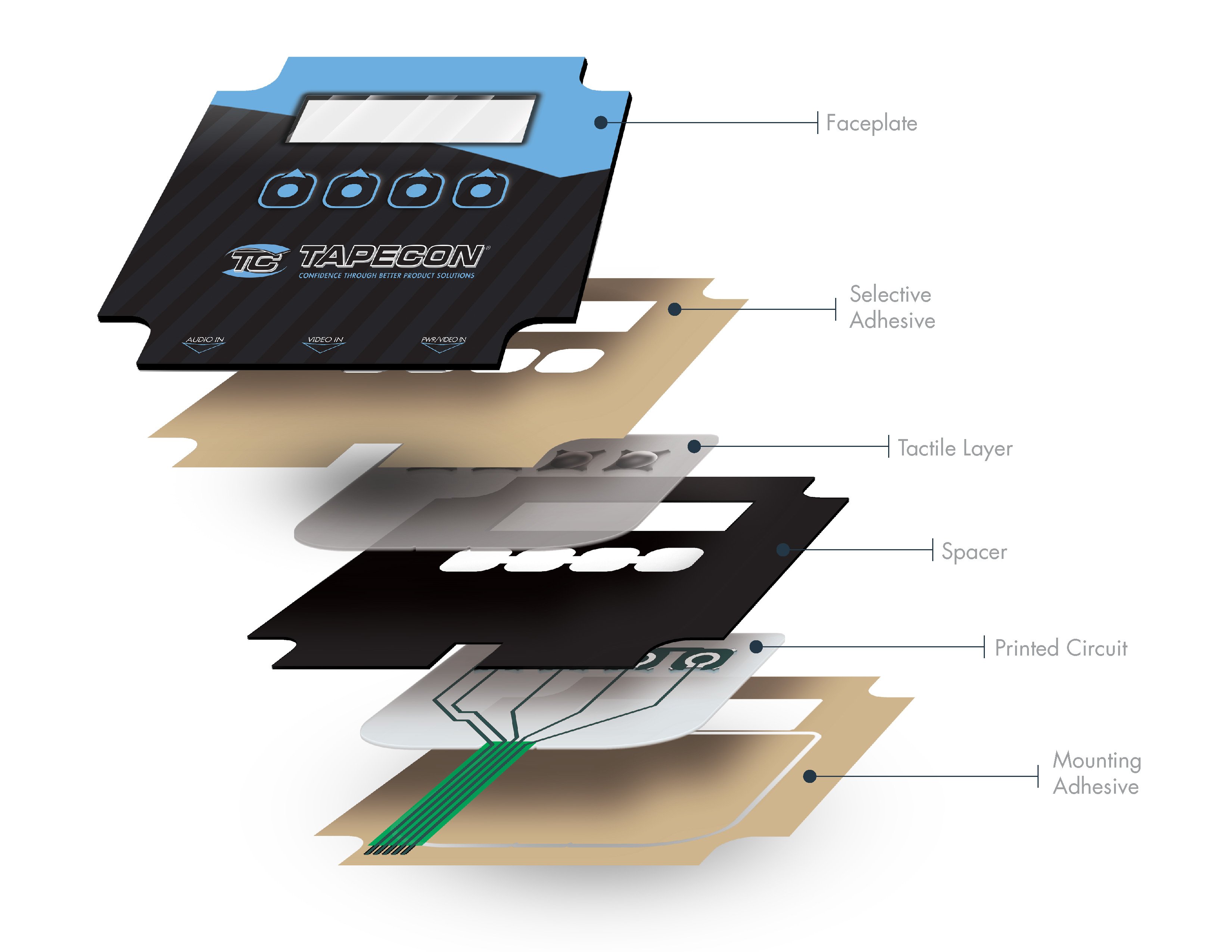Membrane Switches: A Cost-Effective Solution for Product Interfaces
Membrane Switches: A Cost-Effective Solution for Product Interfaces
Blog Article
Understanding the Relevance of Membrane Switches in Interface
Membrane buttons are important components in the style of reliable customer interfaces, helping with not only performance but also boosting visual allure and individual communication. As we check out the various benefits and future patterns linked with Membrane innovation, it comes to be clear that these buttons are a lot more than just parts; they represent a merging of innovation and functionality.
What Are Membrane Switches?

The spacer layer, which has adhesive properties, permits for the splitting up of the circuit layer from the overlay, making sure that the switch remains in a non-activated state up until pushed. When pressure is applied to the overlay, it compresses the spacer layer, linking the gap and finishing the circuit in the underlying layer. This style not just reduces the physical room needed for conventional mechanical switches yet likewise improves the toughness of the device, as Membrane buttons are usually immune to dust, dampness, and various other ecological elements.
Commonly located in applications varying from consumer electronic devices to medical gadgets, Membrane switches are essential to contemporary technology, giving a straightforward and reliable interface that straightens with contemporary design requirements.
Benefits of Membrane Switches
While numerous switch technologies exist, Membrane Switches deal distinctive benefits that make them specifically preferable in various applications. One of the key benefits of Membrane switches is their compact design, which allows for space-saving executions in devices where genuine estate is limited. Their slim profile not only improves visual appeal but likewise helps with lightweight building.
An additional considerable benefit is their resistance to ecological elements. Membrane switches are commonly secured versus dampness, dirt, and contaminants, making them perfect for usage in demanding atmospheres, such as medical devices and commercial equipment. This resilience expands the life-span of the switch, reducing upkeep costs and enhancing dependability.
Moreover, Membrane switches can be tailored to meet certain design needs, incorporating one-of-a-kind graphics and colors that enhance user communication. Their tactile comments alternatives can also be tailored to give a satisfying individual experience. Additionally, Membrane switches are cost-efficient, particularly in high-volume applications, as they can be created effectively.
Applications in Various Industries

In the consumer electronics sector, Membrane switches prevail in tools such as microwaves, washing equipments, and push-button controls. Their tactile responses and aesthetic options enhance customer experience while giving a smooth, modern-day look. Additionally, automobile makers make use of Membrane buttons in dashboard controls and infotainment systems, where room is restricted, and user interaction is critical.
Furthermore, click this the commercial market leverages Membrane switches in control panels for equipment and equipment, allowing for instinctive operation in commonly harsh environments. Their resistance to chemicals and dampness ensures durability and reliability in these applications. On the whole, the adaptability look at this web-site of Membrane Switches adds substantially to their extensive usage, making them indispensable in different technological domain names.
Design Considerations for Membrane Buttons

When developing Membrane buttons, several vital considerations should be considered to guarantee optimum performance and customer experience. First of all, the option of materials is important; selecting long lasting, top quality substratums can improve the button's long life and resistance to environmental factors such as moisture and temperature changes.
Second of all, the style of the visuals overlay must focus on clearness and simplicity of use. Icons and message should be legible, and the format ought to assist in instinctive communication (membrane switches). Additionally, responsive feedback is crucial; including a responsive dome or other systems can improve the individual experience by supplying physical verification of activation
An additional important element is the button's electric efficiency. Developers have to make sure that the conductive traces are effectively made to minimize resistance and stay clear of signal disturbance. This includes examining the needed actuation pressure and making certain compatibility with the electronic components they will user interface with.

Future Patterns in Membrane Innovation
As modern technology remains to breakthrough, Membrane switches are positioned to progress dramatically, driven by innovations in products and producing techniques. One emerging trend is the incorporation of innovative materials, such as conductive inks and flexible substratums, which enhance resilience and reduce the total weight of Membrane switches. These products not only improve the tactile response however likewise enable the style of buttons that can endure harsher environmental problems.
Additionally, the combination of touch-sensitive innovations is changing traditional Membrane Switches right into more interactive interface. Capacitive touch sensing units embedded within Membrane button panels can give an extra user-friendly and receptive customer experience, aligning with the growing need for streamlined, modern styles in consumer electronics.
Furthermore, innovations in printing strategies, such as electronic and 3D printing, enable rapid prototyping and modification of Membrane buttons. This adaptability permits makers to react much more swiftly to market needs and consumer choices.
Last but not least, sustainability is becoming a substantial emphasis, with manufacturers exploring environment-friendly materials and processes. As these trends unfold, the future of Membrane modern technology assures improved functionality, visual appeal, and ecological responsibility, solidifying their duty in sophisticated interface throughout various markets.
Conclusion
In conclusion, Membrane Switches represent an important part in the design of individual interfaces, integrating performance informative post with visual versatility. As improvements in technology continue, the advancement of Membrane buttons is anticipated to additional fine-tune user interfaces, driving development and enhancing use in a progressively intricate technological landscape.
Membrane switches are important components in the layout of effective customer interfaces, facilitating not just performance but also improving aesthetic appeal and user interaction.Membrane Switches serve as an essential component in numerous individual interfaces, assisting in a seamless interaction between customers and electronic tools.While various button innovations exist, Membrane Switches deal unique benefits that make them especially desirable in numerous applications.In addition, Membrane buttons can be personalized to meet details style requirements, integrating one-of-a-kind graphics and shades that boost individual interaction.In final thought, Membrane Switches represent an important component in the design of individual interfaces, combining capability with aesthetic adaptability.
Report this page